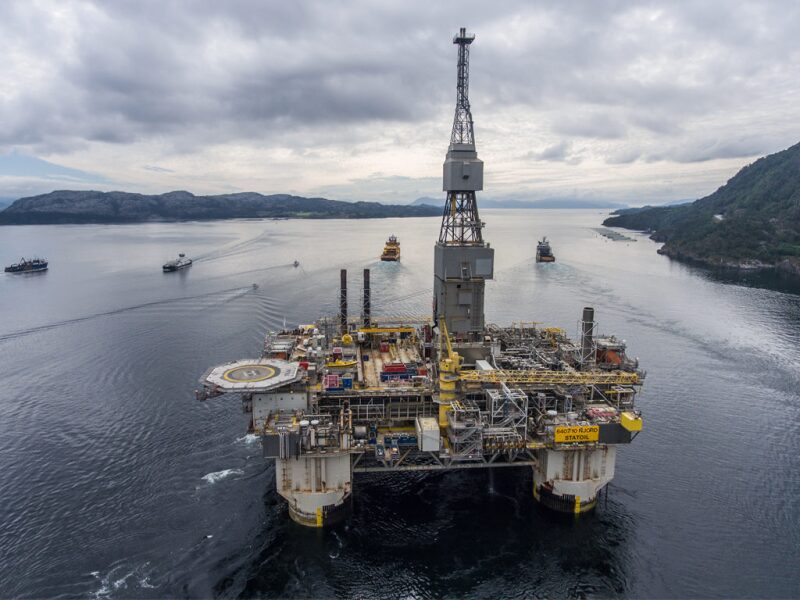Oil and gas are flowing once again from the Njord field following an extensive upgrading project intended to add 20 years to the asset’s lifespan, Equinor said in a statement on Wednesday.
The announcement marks the final milestone of a project that began in 2016 when Equinor moved the field’s production platform and floating storage and offloading (FSO) unit from the Norwegian Sea and back to shore for upgrades.
It also comes 2 years behind schedule after Equinor said the upgrades proved to “more challenging than expected” and that progress was further stymied with the onset of the COVID-19 pandemic. The unforeseen complications nearly doubled the project’s budget, which ended up costing more than $3.1 billion.
Equinor noted that despite the significant cost overrun, the upgraded Njord field remains profitable at oil prices lower than the $82/bbl that Brent crude trades at today.
“This is the first time a platform and a FSO have been disconnected from the field, upgraded, and towed back, and we have now doubled the field’s life. It has been a big and challenging job, partly performed during a pandemic, and I want to thank everyone who has contributed,” said Geir Tungesvik, an executive vice president for projects, drilling, and procurement with Equinor.
Upon their removal, Njord’s offshore facilities had been in operation for 19 years and produced about 250 million BOE over that span. Equinor believes there is at least that much oil and gas left in Njord, the nearby Hyme field, and other satellite fields within tieback distance.
The operator plans to drill 10 new wells from the platform’s upgraded drilling system and will tie in recent discoveries found at the edge of the field and beyond. Among the planned tiebacks include the subsea fields Bauge (operated by Equinor) and Fenja (operated by Neptune Energy) that are estimated to hold a combined 110 million bbl of recoverable hydrocarbons.
The Njord platform is also expected to be powered from shore facilities by 2025 as part of Equnior’s broader electrification initiative. The majority state-owned operator said the electrification of Njord will reduce the asset's CO2 emissions by about 130,000 mtpa.


